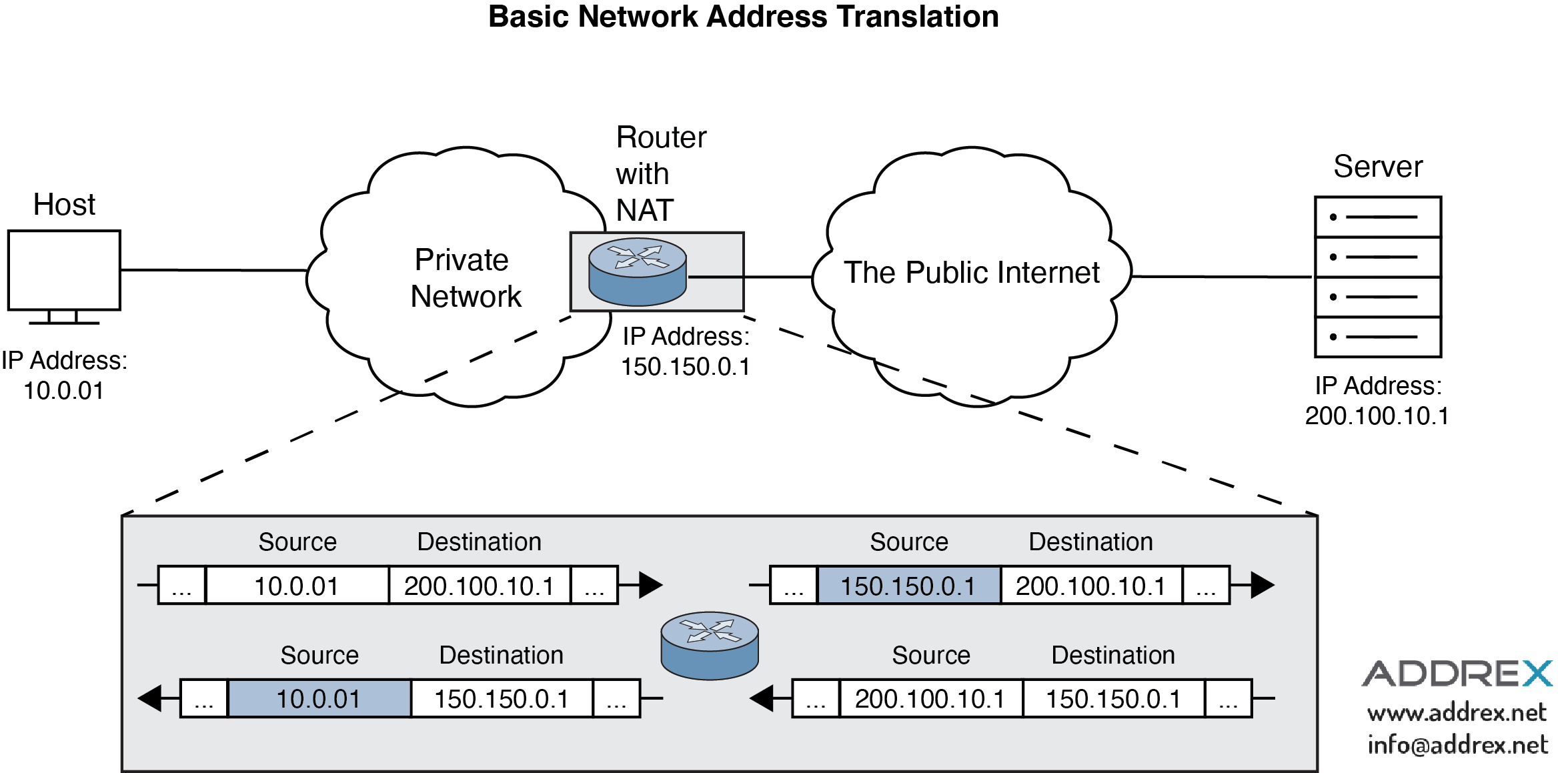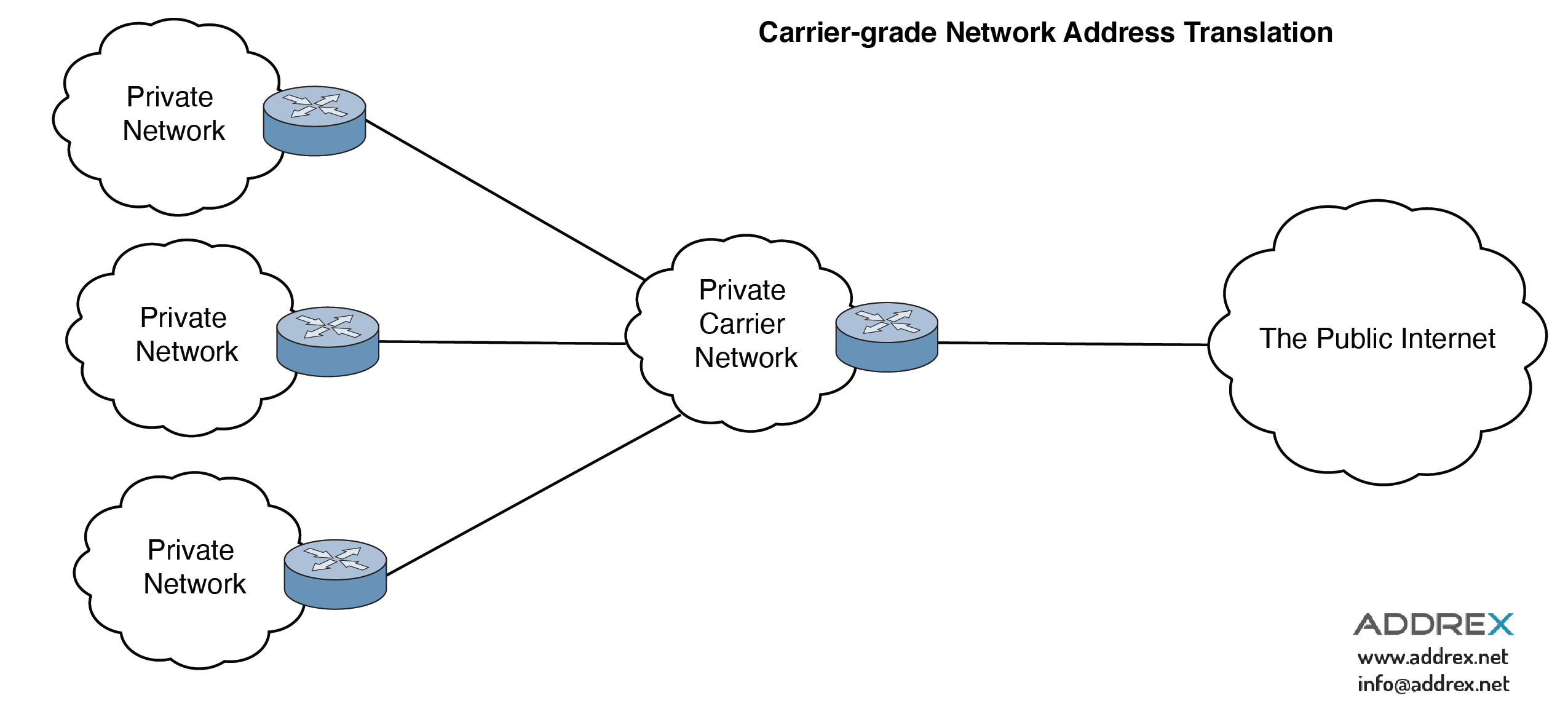
Each device connected in a computer network is assigned a unique identifier called an Internet Protocol (IP) address to ensure it receives messages and information intended for it. The Internet was designed as an end-to-end network, meaning in the early days, each device had its own unique public IP address. However, the Internet grew quickly in the late 1980s and early 1990s with the increasing popularity of personal computing and the World Wide Web. It became clear that the number of addresses available in the current version of IP addresses, IPv4, would not be enough to assign a unique IP address to each device connecting to the Internet.
RFC 1631, The IP Network Address Translator, was published in May 1994 to help solve this problem and address scaling in routing. RFC 1631 proposed reusing IP addresses and, in effect, created private IP addresses. A device in a home network would be assigned a private IP address for communicating with other devices within that network. NAT would sit on a router at the edge of a private network and assign a public IP address to any device connecting to the public Internet. This is basic NAT and is shown below. The diagram’s detailed view shows that NAT changes the source address in the packet it receives before sending it to its destination.


Initially, implementing CGNAT was costly as it required a proprietary device and software. However, lower cost solutions are now available, including virtual CGNAT software that can be installed on off-the-shelf hardware. Another objection to CGNAT is that it broke applications that needed a static public IP address, such as games. These issues have been resolved with application layer gateways and by application developers, who no longer rely on static IP addresses.
As mentioned above, CGNAT provides enhanced logging and security capabilities. Because NAT and CGNAT sit at the edge of private networks, they are often paired with firewalls. NAT and CGNAT also help solve the problem of the dwindling availability of public IPv4 addresses and address blocks—an ISP or large private network uses fewer public IP addresses with CGNAT techniques. CGNAT allows an organization to continue using public IP addresses on a private network.
Organizations can use CGNAT to reduce the number of public IP addresses needed, leaving the remaining IPv4 address block available for sale. Doing so helps the Internet keep pace with demand as more devices connect to it and it helps ISPs and organizations keep pace with increased public network usage, such as the very recent demands the COVID 19 pandemic have placed on the Internet. Conserving public IPv4 addresses and monetizing the unused addresses is also a source of revenue for organizations, one that may not have been previously considered.
NAT, specifically CGNAT, allows companies to conserve their public IP addresses while still being able to use them in a private network. Using CGNAT can help contribute to the health of the Internet as a whole while also contributing to a company’s bottom line through monetization of the remaining public IP address block with no disruption to the current private network service.
Addrex has helped companies monetize excess IP address blocks since 2009 and has successfully facilitated the transfer of over 32 million IP address numbers between buyers and sellers. Addrex began as a broker and has since evolved into a global Marketplace that encapsulates all of the services a broker provides. Our online platform is available 24/7, 365 days a year: we are effectively a broker with a global Marketplace. Contact Addrex to sell excess public IPv4 number blocks or acquire additional public IPv4 address space via [email protected]!
505 Huntmar Park Drive, Suite 220, Herndon, Virginia 20170, United States
USA: +1 (703) 436-8050
© 2024 Addrex, Inc. All rights reserved. Privacy Policy
